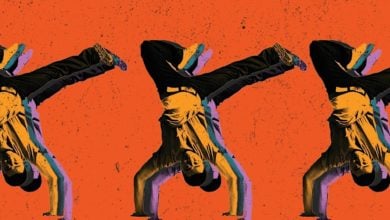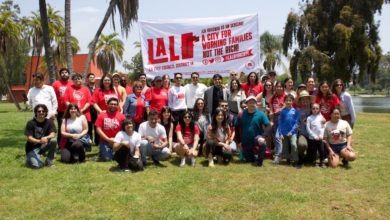A number of well-known political artists and anti-war
veterans gathered outside of the Museum of Contemporary Art in Los Angeles on
Jan. 3 to protest the white-washing and censorship of an anti-war mural created
by Italian street artist Blu in early December.
The mural depicted coffins of soldiers with dollar bills
draped over them instead of flags; a clear representation of the imperialist
wars in Afghanistan and Iraq: soldiers sent to the battlefield to die while
corporations and the rich profit. The exhibit was part of an initiative taken
by MOCA to promote “street art.”
According to MOCA director Jeffrey Deitch, the mural would
have offended or misrepresented a nearby VA hospital and a war memorial to
Japanese American veterans.
The actions taken by MOCA cannot be seen as anything but
censorship. A recent poll taken by CNN shows that 60 percent of people in the
United States are against the war in Afghanistan. This is an all -time high and
clearly shows the rising anti-war sentiment in the country.
Street art is supposed to be a manifestation of the streets.
If the majority of people are against the war, then it is not a controversial
view, but a popular one.
This is not the first time that censorship has been employed
to white-wash a political message. Los Angeles in particular has a long history
of censorship. Perhaps the most notorious case was the white-washing and
removal of Mexican artist David Alfaro Siqueros’ mural on Olvera Street titled
“America Tropical.” The mural illustrated an Indigenous man crucified with an
eagle on top of the cross bearing down on him. The mural was Siquieros’ attempt
to represent the cruel legacy of colonization on the indigenous population of
America. Soon after the unveiling of the mural, it was censored.
Murals and street art have played a tremendous role in
educating and inspiring working class and poor people for decades in countries
throughout the world. Murals and street art have often been used as a tool to
spread revolutionary consciousness and ideals. Street art is readily available
for all; in essence it belongs to the people as a whole.
Like Siquieros’ “America Tropical,” Blu’s depiction of
present day imperialism and the wars abroad is a threat to the status quo.
Throughout its history, there has been censorship in the United States, but
that has not stopped working-class and oppressed communities from using art as
a way to express their class interests. In reality, the ruling class will
employ censorship whenever artistic expression threatens to heighten the
consciousness of workers.
As revolutionaries, we recognize that the message Blu portrayed,
workers sent to die in wars of profit, represents working-class reality. We
stand in solidarity with the artist who was so crudely censored by MOCA. Art is
instrumental in illustrating working-class propaganda and the fight against
injustice everywhere! Artists: Join our ranks!



